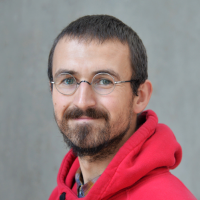Digital Public Defence
The PhD defence will be streamed on Zoom. The host of the session will moderate the technicalities while the chair of the defence will moderate the disputation.
Ex auditorio questions: the chair of the defence will invite the audience to ask ex auditorio questions either written or oral.
Digital Trial Lecture
Title: “ Factors affecting restoration success in northern ecosystems."
Time and place: Jan 21, 2022 10:15 AM, Zoom
Adjudication committee
- Professor Lars Brudvig, Michigan State University, USA
- Dr. Marianne Evju, Norwegian Institute for Nature Research
- Associate professor Kjetil Lysne Voje, Natural History Museum, University of Oslo
Chair of defence
Research Director, Hugo de Boer, Natural History Museum, University of Oslo
Supervisors
- Professor Rune Halvorsen, Natural History Museum, University of Oslo
- Associate Professor Inger Auestad, Western Norway University of Applied Sciences, Sogndal, Norway
- Professor Knut Rydgren, Western Norway University of Applied Sciences, Sogndal, Norway
Summary
"Fixing" the nature - but how?
Have you ever wondered after seeing yet another piece of nature destroyed if there is a way to “fix” this? There is one, ecological restoration! But how “fixed” is good enough?
This thesis explored several aspects of “fixed” – or recovered – ecosystems by studying alpine spoil heaps, surplus rock mounds from hydropower facilities. What are good indicators of recovery? What about roles of different organism groups and different ecological levels (ecosystem, community, population)? Can we predict the time to recovery?
For prediction, we discarded crystal balls and instead developed a method using abundances of vascular plants, mosses, and lichens at multiple time-points to uncover increasing similarity to unspoiled surroundings, our reference. Natural variation in the surroundings defined the conditions for recovery, and we predicted how long it will take by modelling the trajectory of changes. We studied abiotic factors and functional traits of species in a similar way to broaden the perspective. By studying population dynamics of crowberry, we identified factors contributing to the successful establishment of this foundation species at the spoil heaps.
Our results, a comprehensive evaluation of restoration success, will hopefully be useful for restoration practitioners in their important job of “fixing” the nature – for us all.

